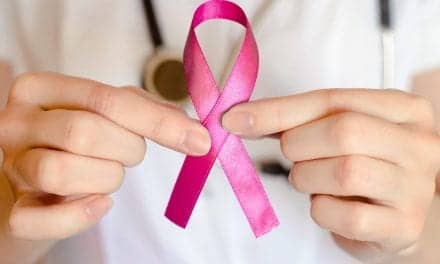By Aine Cryts
Many radiologists believe that women should begin annual breast cancer screening at the age of 40, but women with significantly increased risk—which is defined as having a 20% or greater lifetime risk of having breast cancer—may benefit from supplemental screening with other breast imaging modalities, such as breast MRI, Stacy Smith-Foley, MD, radiologist and medical director of The Breast Center at Little Rock, Ark.-based CARTI Cancer Center, tells AXIS Imaging News. Beginning breast cancer surveillance at a much younger age can also help, she adds.
Breast cancer risk assessment is yet another way for a woman’s care team to personalize their recommendations for women. Smith-Foley describes risk assessment as another form of screening that helps identify patients who are at high risk of breast cancer and those who have genetic mutations that can increase their chances of having breast cancer. With this information at hand, radiologists can make appropriate and personalized recommendations for each woman in her care.
Smith-Foley presented a session called “Personalizing Mammography: Managing the High-Risk Patient to the Dense Breast Patient: Presented by Hologic, Inc.” at the Radiological Society of North America’s (RSNA’s) annual meeting, which took place in Chicago from December 1 to December 6. AXIS Imaging News interviewed Smith-Foley, a fellowship-trained breast imaging specialist, about her session. A lightly edited version of that conversation follows.
AXIS Imaging News: Tell readers about the breast cancer surveillance guidelines you follow at your practice.
Stacy Smith-Foley: In general, we follow the National Comprehensive Cancer Network (NCCN) guidelines and the “10-year rule of thumb,” which holds that a woman should start her breast cancer surveillance starting 10 years before the youngest person in her family was diagnosed with breast cancer. That means that, if a woman’s mother was diagnosed with breast cancer at the age of 40, she should start her surveillance at age 30.
AXIS: What are the consequences of relying on mammography in breast cancer surveillance?
Smith-Foley: Mammography isn’t a perfect test. Even with digital breast tomosynthesis, we don’t find all breast cancers. There are some breast cancers that are mammographically occult. In addition, there are patients with dense breast tissue, high-risk patients, and patients with a genetic predisposition to breast cancer. They’re more likely to have breast cancer that’s occult, or not seen on mammography.
AXIS: How does risk assessment help women?
Smith-Foley: By doing risk assessments and by risk-stratifying patients, we can help facilitate insurance approval for more specialized imaging tests, such as breast MRI or molecular breast imaging. That’s in addition to other types of supplemental screening.
When high-risk patients develop breast cancer, particularly patients with a genetic disposition, it is often more aggressive and more advanced at the time of diagnosis. We need to go back to the ultimate goal of all breast screening, which is to identify breast cancer at an early stage when the disease is small and treatment is easier for the patient and more effective and less costly for the healthcare system. We might lose out on that opportunity if we’re not performing a risk assessment.
Aine Cryts is a contributing writer for AXIS Imaging News.





